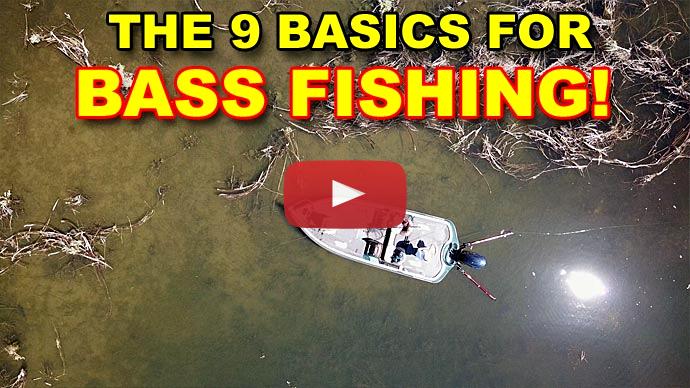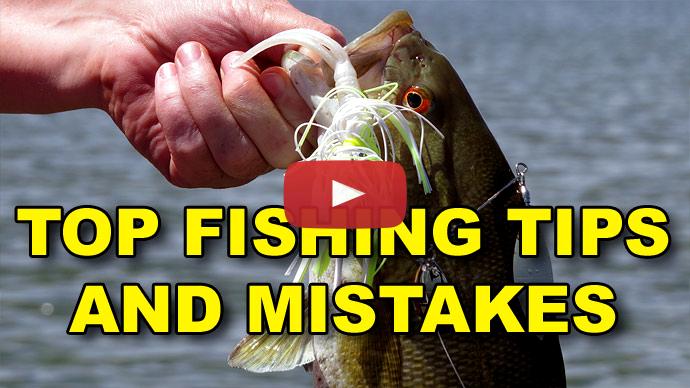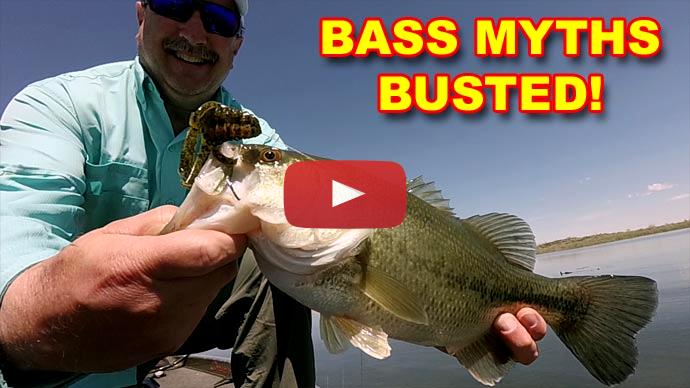Hey, folks. Glenn May here with BassResource.com and I want to talk to you a little bit about, you know...bass fishing, it can be a lot of fun, it can be rewarding. At the same time, it can be really challenging and sometimes it can humble you an awful lot. It's funny how we continue to do the same things over and over again and sometimes it works really well and other times it doesn't. And there's a reason for that, actually. It's because there's like the top five things I can come up with that would continue to frustrate you because you keep on doing it. We've all been there. I've done it. So let me explain what these are.
So starting off with cover. You will get caught up in looking at all the different kinds of cover and what to fish. If you get in a lake that's ringed with docks, you're going to go through and fish every single dock. Or, it's got lilly pad fields, tons of that, let's fish that all. Or a lake like this, I've got flooded willows, flooded bushes, and timber. It all looks good, so you get caught up in looking at all the eye candy.
What you need to do is when you start catching fish, really focus in on why was that fish there? Was he near deep water? Was he near vegetation? Was it in a little pocket or cove? Which way was the wind going? Focus on that stuff and pretty soon, you'll start to figure out, say, for example, you're on a lake with a lot of docks, which dock is better than the other. "Oh, they're all on floating docks out on long points." Once you start to figure that out, you can skip all the eye candy in between and focus on only the things, the only docks that hold fish, same thing with flooded timber or bushes or logs or whatever. Start catching fish, figure out what they're positioned on, what kind of cover, and then just skip the rest. Don't get caught up in that eye candy.
The second reason why bass fishing will continue to frustrate you is because you don't get the notion that it's structure and not cover that positions the fish. Okay, structure is anything that's part of the bottom contours, drop off, ledges, it's humps, it's ridges, it's flats, points, this type of things. This is where the bass will set up and feed. Once you figure out that and how the bass are positioned on that, cover becomes secondary. The fish will find the cover near or on that structure and then the cover is just a matter of like what kind of bait you're going to use to get to that fish.
Now, the number three reason is that you won't be observant enough. With all that cover to look at, it's no wonder that many of us will ignore the signs that other wildlife are presenting to us, such as grebes, beaver, carp, eagles, birds. Even on that shoreline you're looking at, cows, whatever, even dogs and cats, they're just some of the critters that can tell us about bass fishing if we only notice. I can't tell you how many times that I've been fishing and if the fishing is really, really slow, we're not doing very well and it dawns on me that, "Hey, the birds aren't chirping. They're not flying around. There's not much activity going on." But then at some point during the day, that will pick up. All of a sudden, they're flying around. You can hear them making all kinds of noise. You can see cows moving around, dogs are barking, and guess what? The fishing picks up, too, okay? So be observant of things going on all around you, not just what's in the water.
Another reason why bass fishing will continue to frustrate you is because you won't use your GPS and your mapping on your electronics properly. Many bass anglers today have thousands of dollars wrapped up in the GPS sonar units on their boats, myself included. Unfortunately, many of us just simply turn them on and read the water depth and water temperature all day long. That's it. That's really a mistake.
First of all, that's a waste of money. But also, the depth finder and the information on that, on the maps especially, can help you find fish in ways that you couldn't have done 10 years ago. The contours on these things are less than a foot now. The detail on them, some of them have community information that people contribute to help you find more fish, what kind of cover is where, and what depth, what are the fishing hot spots, things like that, you know? But even more so, you can find those channels. You can find river bends, humps, ledges, all sorts of things in underwater cover. If you're on a reservoir, you can find building foundations, rock piles. You can find old bridges, just all kinds of stuff, if you sit down and really take some time to learn how to get the most value out of the electronics that you just bought, and you're going to end up catching a lot more fish.
Another reason why bass fishing will continue to frustrate you is because you'll emphasize lures and baits over location and positioning. Guys, it's the old 80/20 rule. You spend 80% of your time and money on baits and tackle, when 80% of your success is really due to location, positioning of the boat, positioning of the cast, angles, and timing of the day. Focus more on that and finding the fish. The lure choice becomes secondary at that point.
And those are the top five reasons that bass fishing will continue to frustrate you. Now, I'm being kind of tongue in cheek, obviously, but I want you guys to understand that getting outside of your comfort zone and learning more about these things that are a little more intricate, a little bit harder to learn, those are the things that separate you from the rest of the pack and will enable you to catch more fish. I hope those tips helped. For more tips and tricks like this, visit BassResource.com.



